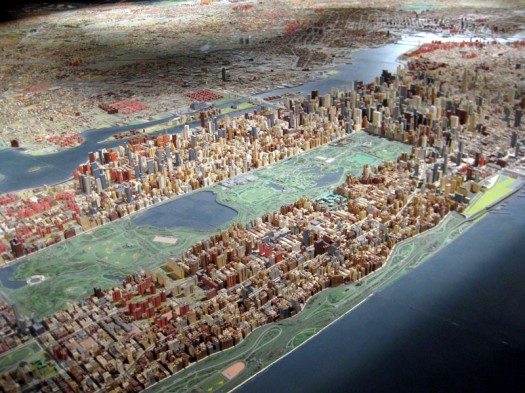
We are celebrating 15 years — and counting — of stories that are deeply researched and deeply felt, that build a historical record of what the city has been.
We are celebrating 15 years — and counting — of stories that are deeply researched and deeply felt, that build a historical record of what the city has been.
Contemplations of New York City’s past, present and future are everywhere this spring. The League’s new exhibition The City We Imagined/The City We Made, now in its second week at 250 Hudson St., is an opportunity to reflect on the most recent chapter of New York’s development history (2001-2010). On Monday 5/17, the second in a series of public programs related to the exhibition will take place, this time exploring the city’s Design + Construction Excellence program, initiated in 2004. Panelists, including Charles McKinney (Dept. of Parks and Recreation), David Resnick (Deputy Commissioner of the DDC), Thomas Balsley (Thomas Balsley Associates), Scott Marble (Marble Fairbanks) and Jennifer Sage (Sage & Coombe Architects), will explore how a policy of emphasizing design quality has influenced the planning for, commissioning of, and shape of public architecture during the past six years. Tickets still available!
An analysis in exhibition form of another period of urban transformation is on view at the Museum of the City of New York. The Times and Places both look at America’s Mayor: John Lindsay and the Reinvention of New York.
Meanwhile, Newsweek is imagining what the city’s future might look like. They commissioned Cooper Robertson & Partners, Richard Meier & Partners, and HOK to speculate on how we will live, work, commute and play in New York City in 2030. Taking the conversation national, The Atlantic has produced what they call a “special report on the changing national landscape,” entitled “The Future of the City.”

Panorama, Queens Museum. Photo by Flickr user bankbryan.
In order to plan more effectively for New York City’s future, a new map is in the works, and an incredibly detailed and technologically-advanced one at that. The City and CUNY have partnered to use Lidar (light detection and ranging) laser technology to collect data about the topography and structures of the five boroughs over a series of late-night flights last month. According to The New York Times, the project is “expected to yield the most detailed three-dimensional picture of New York City to date, with an emphasis on structures, elevations, sun and shade, and nooks and crannies relevant to the city’s emergency response system and its environmental goals.” Rohit T. Aggarwala, Director of the NYC Office of Long-Term Planning and Sustainability, compares the project to Robert Moses’ Panorama (a favorite of the Omnibus team), just “more accurate and digital.”
If you prefer your city planning virtual, with a hefty dose of real-life problems, you might be interested in IBM’s new “serious game” CityOne. Fast Company takes a look, calling the game “much like Sim City, only the problems are scarily real, ranging among energy, water, banking, and retail.”
The History Channel is currently airing a 12-episode history of the shaping of the United States called America: The Story of Us and this Sunday’s installment chronicles the rise of the early industrial city. In ‘Cities,’ “Americans conquer a new frontier–the modern city–with Carnegie’s empire of steel as its backbone. Skyscrapers and the Statue of Liberty are symbols of the American Dream for millions of immigrants. Urban life introduces a new breed of social ills, set against the backdrop of stunning skylines and ambitious innovations.” (via Planetizen)
Do cities need a creative director? Of course, Tyler Brûle thinks so. The Urbanophile has a more sober analysis, likening such a position to that of a high profile czar with limited ability to change anything, and makes a revealing comparison to the White House Office of Urban Affairs, the leadership of which was recently vacated by former Bronx Borough President Adolfo Carrión, Jr., leading some to claim a major opportunity for a coordinated urban policy at the national level has been wasted.
Don’t forget – Sunday, 2pm, Roosevelt Island. See you there!
The Roundup keeps you up to date with topics we’ve featured and other things we think are worth knowing about.
The views expressed here are those of the authors only and do not reflect the position of The Architectural League of New York.